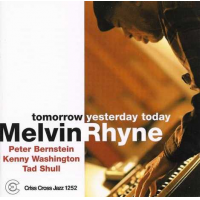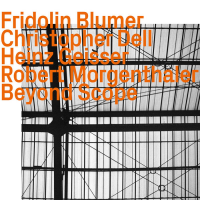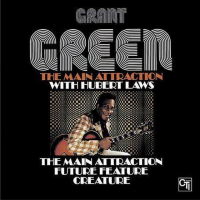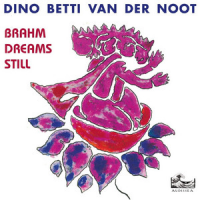Home » Jazz Articles » Liner Notes » Peter Beets: New York Trio Page Two
Peter Beets: New York Trio Page Two
The foregoing is meant to set the stage for yet another inspired example of cross-cultural fertilization; namely the pairing of Dutch jazz pianist Peter Beets with American masters Larry Grenadier and Willie Jones III. As a transcendent follow-up to his first Criss Cross outing, New York Trio, Beets has fashioned an engaging listen that manages to cover a lot of ground while speaking unequivocally in the tradition of the piano trio format. Equally compelling is the fact that Beets has managed to develop his own style while continuing to reside many miles from the center of jazz activity in the United States.
Although his diverse background has been delineated before in the notes to New York Trio, it bears repeating that Beets was the product of a music-loving family, his mother being a music teacher and his gynecologist father a great lover of the music of Oscar Peterson and Art Blakey. "We had a library [in town] and we could order and borrow records and so the first ones I borrowed were Cannonball Adderley's Somethin' Else and Miles Davis' Kind of Blue. I put them on a tape and it was beautiful," says Beets. "So I was addicted from the first moment that I knew this music existed. The music of Charlie Parker, in fact, made me happy when I was only maybe eight or nine years old and I knew that this was going to be a treasure for the rest of my life."
Very early on, Beets seemed destined for great things. "I won prizes and was on the radio and television when I was 11 or 12 years old." A family band with older brothers Marius and Alexander found an adoring audience and provided a working environment for the threesome to perfect their craft. " We played together for about 12 years or so, until about 1996. We're still playing on occasion, but it's now 20 times a year instead of 200 times a year." Most recently, Beets has become the regular pianist of The Jazz Orchestra of the Concertgebouw and has played or recorded with many American jazz musicians including Curtis Fuller, Jeff Hamilton, Teddy Edwards, Ed Thigpen, Johnny Griffin, and Elvin Jones.
In choosing his associates for the album at hand, Beets decided to bring back drummer Willie Jones III, a dynamo who has proven himself not only in trumpeter Roy Hargrove's band, but also on such Criss Cross sides as Anthony Wonsey's Open the Gates, Ryan Kisor's The Dream, and Jesse van Ruller's Here and There. "I've listened to a lot of drummers and did a lot of research in terms of finding who would be a good drummer to complete this trio," Beets elucidates. "But I couldn't think of another drummer who would make the trio sound better. He does beautiful brushwork and he's real steeped in that African rhythm. Now I didn't know if it would work with Larry and Willie, but I like that challenge of doing something special because something really unique is happening."
As for bassist Larry Grenadier, he's become a modern day equivalent of Paul Chambers or Sam Jones in that his versatility endears him to a diverse range of leaders from all arenas. From Seamus Blake's groundbreaking first records like The Call and Four-Track Mind to recent sessions with Pat Metheny and Charles Lloyd, Grenadier has worked with the best in the business and his willingness to give to any musical situation is a further asset to any employer. "You can hear he has a lot of experience playing in a trio," explains Beets. "He's got a big sound and I love him [on this record] because he is very giving to the music." The chemistry is clearly palpable throughout the set, although the pianist claims that he leads more through actions than words. "I don't talk a lot; I leave almost everything up to their imagination. I like the idea of American professionalism because they are like cooks and they put in certain ingredients for certain songs. It's like they are at your service."
First dating back to his 1967 Verve release of the same name, Jerome Richardson's "Groove Merchant is also known through versions by the Thad Jones/Mel Lewis Jazz Orchestra and Kenny Burrell. As Beets explains its inclusion here, "I did this one in five because Larry is a specialist in doing odd meters. My bassist in Holland, Frans van Geest, actually thought of the idea and I had played it with Brad Mehldau when I was in New York. I was in the studio and we sat behind the piano while he was playing the bass line."
The Sonny Rollins classic "Paradox" debuted on the tenor phenom's 1955 Prestige session "Worktime." Beets has fashioned it for this trio for very specific reasons. "I like this song because everyone always seems to play "Woody 'n' You," but I think the chords change too fast for me. But this one almost nobody plays and I think it's much nicer. The arrangement is trying to put as many drum hits in one bar as you can, but not making the song sound totally different." Indeed, Jones tackles the challenges without breaking a sweat and throws in some fine solo statements to boot.
Although done by a plethora of musical artists in many different stylistic arenas over the years, "Without a Song" continues to provide fodder for improvisers due to its tuneful melody and advanced changes. "I heard it in the key of 'E,' which is a difficult key. To get all those chords you hear and normally play to work in this key is difficult and so you practice. But as I was doing that, I went slowly and I liked it so much that I decided it was beautiful as a ballad. The bridge then is twice as long as normal."
As the namesake of "For Simon," the young son of Marius Beets served as inspiration to his Uncle Peter. "This song is written for my nephew who just recently celebrated his first birthday and he is just a great little kid," Beets elaborates. "I worked on this almost every day for three months and I wanted to finish it, but I didn't know how to end it." Eventually the pianist came up with a short vamp based on the opening bars of Benny Golson's "Killer Joe." "You hear us coming into the tempo more and more and it becomes more and more swinging. It's like we have a destination and we're getting there."
Buoyed by Jones' delicate brushwork, the waltz tempo of "It Has Happened" provides for some attractive swinging at a slower pace. "It's a song that's really rather romantic. The title is in reference to persistence, in terms of getting through the chord structure of the tune. It's also meant for people who have to leave something behind in their lives. Like if there's a vase that's very expensive and it's fallen and broken, you can't make it anymore, so just leave it and then move on."
Taken at a brisk tempo, the quintessential form of Miles Davis'"So What" provides somewhat of a cathartic format for stretching out at length. "It's about total freedom. The only thing [you have to worry about] is the form: you have 32 bars and four counts to a bar and so you can do anything you want rhythmically," says Beets. "I wanted to give Larry some space to do what he wanted and not having to think too much about changes is nice."
Back in the days when Norman Granz was producing records in the spirit of his Jazz at the Philharmonic sessions, it was common to include a ballad medley of two or more related pieces. In this tradition we have "Chelsea Bridge/Upper Manhattan Medical Group." "I think that not only are the original keys of those two songs the same, but I think they almost have the same atmosphere. It's strange that no one has done this combination before." It's an amalgamation that does work well and provides for a nice contrast when the latter piece kicks in at a brisk tempo.
It's a gentle bossa breeze that maintains the melancholy disposition of "In a Hazy Mood." "Larry plays difficult keys with ease and so this one was really done with him in mind." This original actually dates back a few years when Beets first left home for college. "It was written at a time when I wasn't all that happy. I was in a dorm room alone for the first time when I went to study, but I had a very romantic view. So this one came out of my heart at that time because I wasn't necessarily that unhappy, but I was missing my family and so forth."
The genesis of "Night Mist Blues" goes back to its debut on the 1961 Argo date Ahmad Jamal at the Blackhawk, although it was not this recording that initially endeared the piece to Beets. "I heard this one on a Monty Alexander album recorded live in Montreux in 1976 with Jeff Hamilton and John Clayton and it's a smashing hit. The CD is also one of my inspirations. I play a lot of blues and I try to put a lot of spontaneous things into it. Of course, I always say that jazz is a mixture of blues, Bach, and Africa." Dig the set up as the trio prepares its launch into the frenetic double time section!
Thus, we come to the close of a record that Beets finds to his liking. "I'm very proud to be on Criss Cross and I get reviews from all over the world. And now we have the second CD and we have to try to do it better; if it's not better then it's like you're standing still." One listen to Page Two and there's no doubt that Beets need not worry about stagnation because he's clearly on the way up.
Liner Notes copyright © 2026 C. Andrew Hovan.
New York Trio - Page Two can be purchased here.
Contact C. Andrew Hovan at All About Jazz.
An avid audiophile and music collector, Chris Hovan is a Cleveland-based writer / photographer / musician.
Track Listing
The Groove Merchant; Paradox; For Simon; Without A Song; It Has Happened; So What / Impressions; Chelsea Bridge / Upper Manhattan Medical Group; In A Hazy Mood; Night Mist Blues
Personnel
Album information
Title: New York Trio - Page Two | Year Released: 2003 | Record Label: Criss Cross
Tags
PREVIOUS / NEXT
Peter Beets Concerts
Support All About Jazz
 All About Jazz has been a pillar of jazz since 1995, championing it as an art form and, more importantly, supporting the musicians who make it. Our enduring commitment has made "AAJ" one of the most culturally important websites of its kind, read by hundreds of thousands of fans, musicians and industry figures every month.
All About Jazz has been a pillar of jazz since 1995, championing it as an art form and, more importantly, supporting the musicians who make it. Our enduring commitment has made "AAJ" one of the most culturally important websites of its kind, read by hundreds of thousands of fans, musicians and industry figures every month.





















